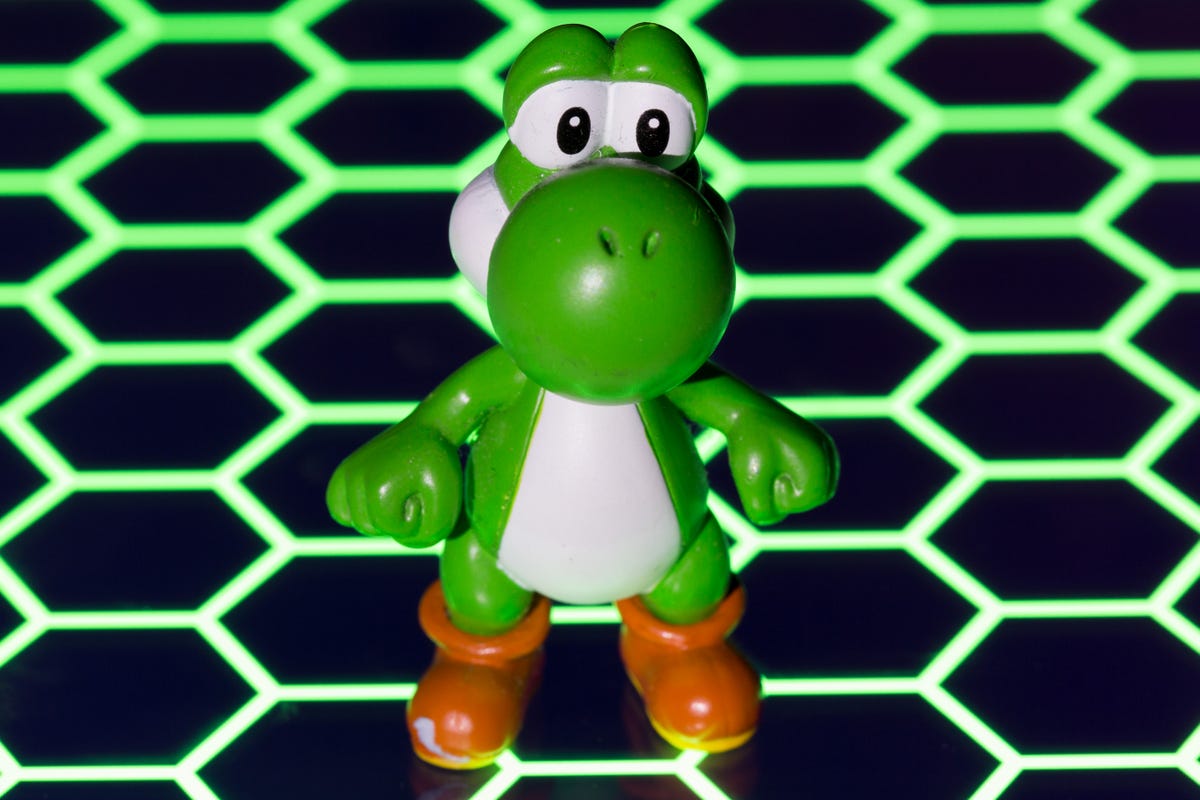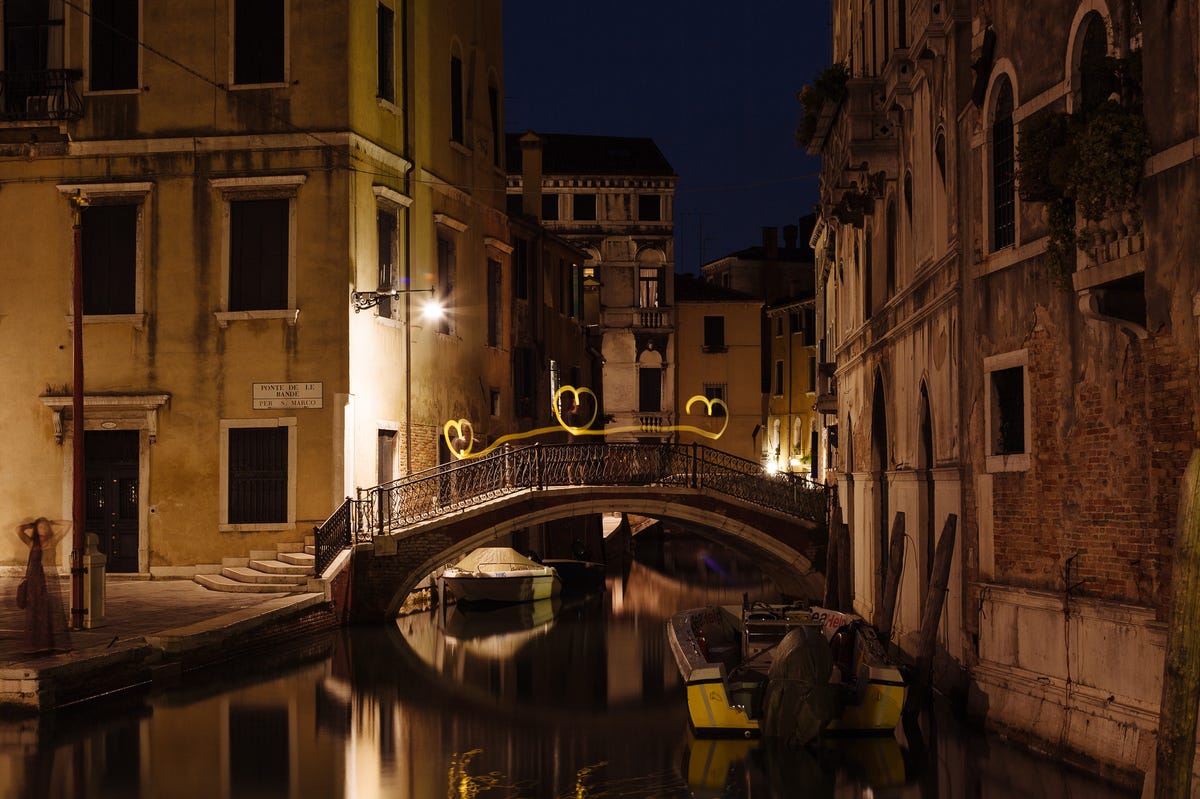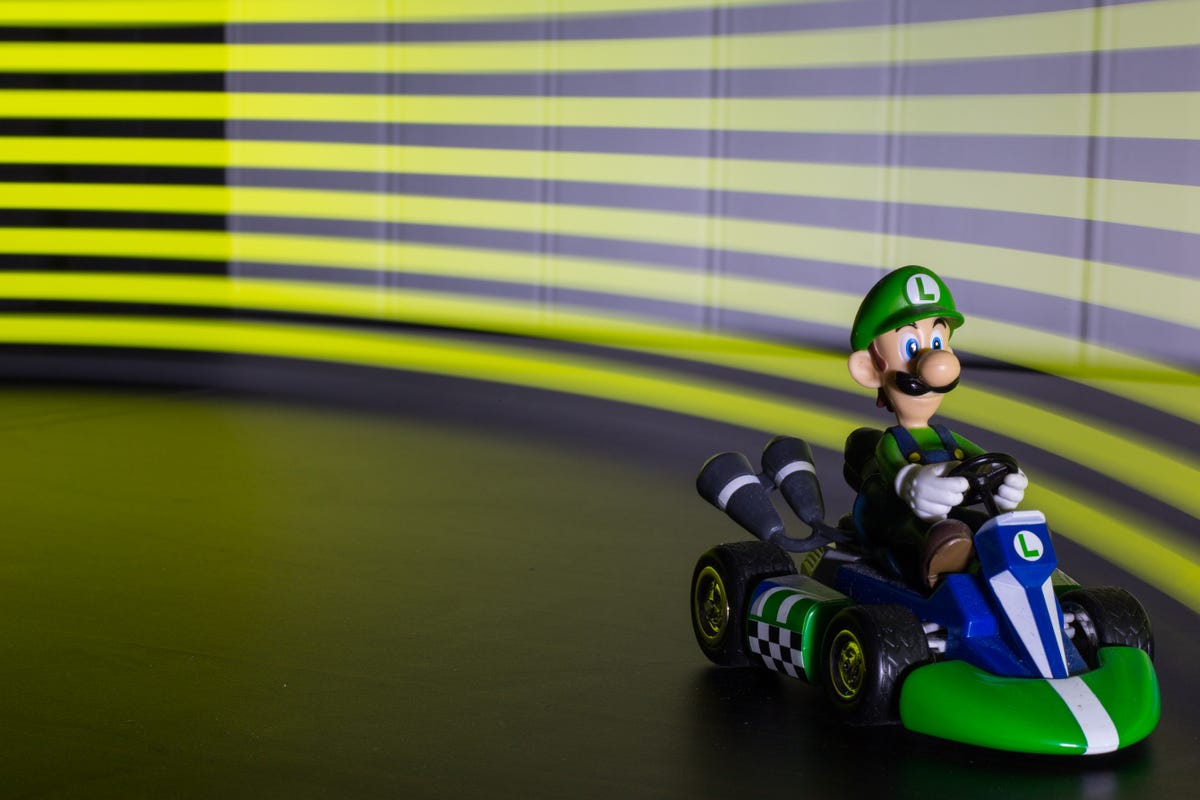

Now playing:
Watch this:
Use a tablet as a photography light
2:08
A tablet is a great way to view your photos, but it can also be incredibly useful when making them. Here are five ways to turn a tablet into a DIY photography light. Many of these tips will also work with a laptop or a large smartphone screen too.
Backdrop
Sick of the same old macro photos? Turn your tablet into a DIY illuminated background to add some interest to the scene. This technique works best with smaller objects like toys or flowers placed in front of the screen.
Find an image to use as a backdrop, and then turn up the screen brightness. Make sure to use an image that you have the rights to photograph, such as a photo with the correct Creative Commons license.
To help throw the background out of focus and concentrate on your subject, choose a wide aperture (small f-stop) to create a shallow depth of field.

Lexy Savvides/CNET
As an alternative, lie the tablet down with the screen facing up. Then, place a small object on top of the screen with your desired background. This technique works best when the ambient light is low so you get a glowing effect from the screen up into the subject.
Light painting
Light paintings are often made with torches and sparklers, but any light source can make the magic happen — including your tablet screen. These images are made when the ambient light is very low, so find a dark room or head outside at night to experiment.
One example of using a tablet screen (or even a smartphone) for light painting is to trace shapes in front of your camera lens while the shutter is open for several seconds. You can even experiment with spelling out words, but remember to write in mirror image from right to left.


Lexy Savvides/CNET
Exposure tips
- Long exposures require the shutter to stay open for a long period of time. Use a tripod or place the camera on a steady surface, and use a remote release (or self-timer) to reduce any potential camera shake.
- Keep the ISO low to reduce noise
- Use manual mode to have full control over shutter and aperture values. Use the light meter to get an indication of what combination will give you a correct exposure.
- If possible, turn on exposure simulation on the dSLR so you get a better idea of what the final exposure will look like on screen (if you’re using live view). Also, exposure simulation makes focusing a lot easier if it’s dark.
- Make shapes appear in photos by displaying an image such as a white star against a black background, then open and close the tablet cover in different positions around the frame during the exposure.
There are plenty of apps that can produce different effects on your tablet screen, such as Holographium for iOS which creates slices of words and pictures that appear as 3D objects when caught on camera.


Lexy Savvides/CNET
Softbox Pro for iPad comes with a range of preset shapes, patterns and colours to display on the screen, as well as a screen brightness toggle within the app.
For Android, Softlight lets you play around with colours and brightness for illuminating the scene. Dr. Light Painting will spell out words and draw pictures when dragged across a scene.
Softbox
Your tablet is not designed to replace a studio light, but it does provide a large, bright light source to illuminate a subject.


Lexy Savvides/CNET
Display a solid white image on the screen and turn the brightness up to its maximum value. Depending on the effect you are after, position the subject and then move the tablet to act as a fill light. You might find it easier to have an assistant help you with positioning the tablet, or else turn on self-timer mode on the camera and hold the tablet in position.
With a tablet as a DIY softbox it’s possible to fill shadows on a subject’s face, or create a moody effect by highlighting their features. Experiment with the distance from the subject’s face and screen brightness settings.
For a really dramatic look, turn off all the lights and use the tablet as your main light source. By holding the tablet to the side of your subject’s face, you can create a striking portrait where half of the face is illuminated and the other half falls off to darkness.
For this technique it’s easiest to mount your camera or dSLR on a tripod to use a slightly longer shutter speed, or else turn up the ISO so you can hold the camera without introducing camera shake.
LED flash


Lexy Savvides/CNET
Tablets with an LED flash built-in to the camera module have another fun light source to play with. If you can control the LED flash independently through a flashlight app, turn it on to create an instant torch.
The light can then be used to illuminate anything from a small object to the side of a subject’s face.
The concentrated beam of light is also useful for creating an outline around a subject when light painting.
For videographers, try using the LED as a constant light when shooting in the dark.
Lightbox
Got a box of old negatives or slides lying around? Dig them out and use your tablet as a DIY lightbox.
Depending on the size of the tablet screen, line up the negatives or slides side by side to review them easily, then adjust the screen brightness to get the desired result. If you find you can see individual pixels from the screen coming through, try diffusing the light by placing a sheet of tissue or baking paper between the screen and the negatives.
For Android, try the simple but effective app Lightbox Free. For iOS, Light Pad HD offers the ability to toggle certain sections of the screen on and off to highlight individual slides.
If you own a flatbed scanner, the tablet can also act as a backlight so you can scan negatives. Simply place the negatives on the scanner glass, lay the tablet with a white screen on top, then start the scan. Invert the image in post-processing to see the finished result.




